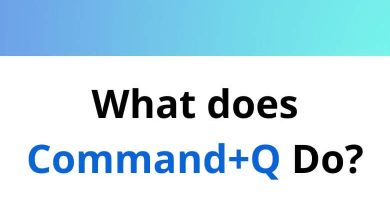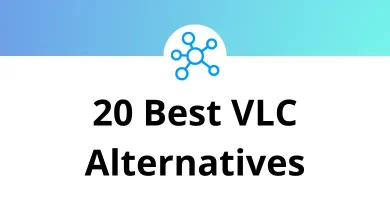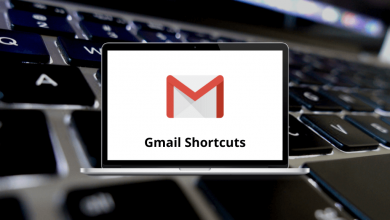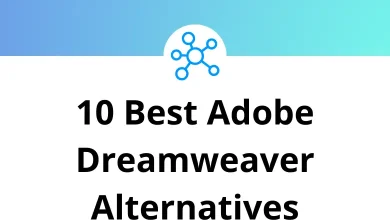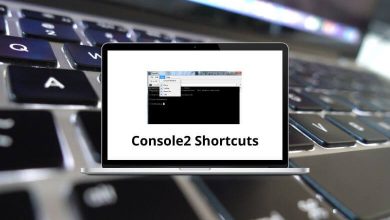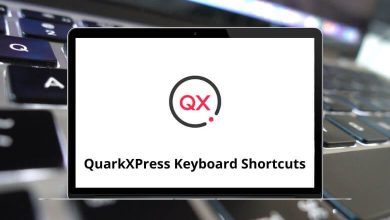30 Best AI Image Generators to Create Pictures Instantly (2025)
AI Image Generators have completely changed how we think about creativity. Instead of spending hours sketching, editing, or working with expensive software, you can now describe what you want in plain language and get a finished picture in seconds. Whether you’re a designer, marketer, content creator, or just someone who wants to play around with ideas, these tools are fast becoming essential.
Table of Contents
With so many AI image editors and AI picture creators popping up, the real challenge is knowing which one’s worth your time. That’s exactly why I’ve pulled together this detailed guide to the Top 30 AI Image Generators that are actually deliver results.
What Makes the Best AI Image Generator?
Not every tool that slaps the “AI” label is equal. The best AI Image Generators share a few things in common:
- Ease of Use – You shouldn’t need to learn a programming language just to get a decent picture.
- Quality of Output – High-resolution, realistic, or stylistically consistent images are what set the top tools apart.
- Speed – Some platforms generate in seconds, while others keep you waiting. Speed matters when you’re creating content at scale.
- Customization Options – From fine-tuning styles to editing layers, the flexibility of an AI image editor makes or breaks it.
- Use Cases – Logo design, marketing campaigns, product photos, character art, memes you name it. The best tools adapt to your needs.
In short, the “best” AI for image generation isn’t about hype; it’s about how well the tool helps you bring your vision to life.
30 Best AI Image Generators to Try in 2025
1. Midjourney
Midjourney is one of the most talked-about AI Image Generators because of its ability to create jaw-dropping, artistic visuals. Instead of looking overly digital or generic, its outputs often feel like they came straight out of a professional art studio. You access it mainly through Discord, which makes it feel more like a community than just a tool.
Midjourney is perfect for concept art, illustrations, and even surreal, dreamlike images. It’s fast, reliable, and widely used by creatives, marketers, and everyday users who just want something unique.
Key Features of Midjourney:
- High-quality, artistic image generation
- Works via Discord prompts
- Consistent style options
- Strong community sharing and feedback
- Rapid iteration and updates
2. DALL-E 3 (OpenAI)
DALL-E 3 is OpenAI’s latest leap in AI Image Generators, and it’s all about turning natural language prompts into detailed, accurate pictures. Unlike earlier versions, DALL-E 3 really nails complex requests, making it super useful for marketing creatives, illustrations, and even educational visuals.
The best part? It integrates directly with ChatGPT (GPT-4o), so you can brainstorm, refine, and generate images without jumping between apps. It’s perfect if you need clean, realistic images with minimal tweaking.
Key Features of DALL-E 3:
- Tight integration with ChatGPT
- Handles complex, multi-layered prompts
- High-resolution outputs
- Works for commercial use (with proper licensing)
- Accessible in-browser—no tricky installs
3. Stable Diffusion
Stable Diffusion is an open-source powerhouse in the AI Image Generators space. Unlike closed platforms, you can run it on your own computer, customize models, and even fine-tune outputs for your specific needs. This flexibility makes it a favorite for developers, hobbyists, and artists who want more control over their creations.
With plugins, extensions, and community-trained models, it’s like the “Photoshop of AI art” if you’re willing to tinker.
Key Features of Stable Diffusion:
- Open-source and free to use
- Supports local installs and web UIs
- Huge library of community models
- Highly customizable prompts and outputs
- Constantly updated by an active developer base
4. Adobe Firefly
Adobe Firefly is Adobe’s entry into the AI image editor world, and it’s made for professionals who already use Photoshop or Illustrator. Instead of just generating random images, Firefly focuses on editable, high-quality results that slot neatly into your workflow. You can create backgrounds, edit text effects, or generate new variations of your designs without leaving Adobe Creative Cloud.
It’s perfect for marketers, designers, and businesses who want professional-grade AI without losing creative control.
Key Features of Adobe Firefly:
- Seamless integration with Photoshop/Illustrator
- Commercially safe image generation
- AI-powered text effects and image editing
- High-resolution and brand-friendly outputs
- Built into Adobe Creative Cloud apps
5. Leonardo AI
Leonardo AI is making waves as one of the fastest-growing AI Image Generators for creative industries. It’s popular among game designers, marketers, and content creators who want production-ready visuals with minimal effort.
Leonardo AI provides templates, fine-tuning controls, and a library of pre-trained models that help users get the exact style they want. It’s especially strong for generating characters, product renders, and fantasy artwork.
Key Features of Leonardo AI:
- Fast, high-quality image generation
- Wide variety of creative templates
- Easy customization and fine-tuning
- Great for gaming, product, and fantasy art
- User-friendly interface for beginners and pros
6. Ideogram 2.0
Ideogram 2.0 is an AI Image Generator designed with text-in-image precision in mind. Unlike many AI tools that mess up words, Ideogram nails typography inside visuals making it a go-to for posters, social media graphics, and branded content. The latest update improved realism, speed, and consistency, so whether you want sleek ad creatives or meme-style text art, it delivers with style.
Key Features of Ideogram:
- Accurate text rendering inside images
- Great for posters, ads, and branding
- Smooth, realistic outputs
- Fast and user-friendly
- Supports multiple design styles
7. Recraft
Recraft is all about vector and editable artwork. While many AI Image Generators pump out raster images, Recraft focuses on producing designs that scale perfectly for logos, icons, and illustrations. It’s especially popular among marketers and startups looking for quick, brand-ready assets. With AI-driven creativity and clean lines, it saves designers hours of manual work.
Key Features of Recraft:
- Creates scalable vector graphics
- Ideal for logos, icons, and illustrations
- Brand-friendly results
- Clean, professional-quality outputs
- Easy export for web and print use
8. Designhill Logo Maker
Designhill Logo Maker is an AI-driven branding tool that helps businesses create professional logos without hiring a designer. It takes user input like brand name, industry, and style preferences—and generates polished, ready-to-use logos. While it’s not for complex art, it’s a great AI picture creator if your main need is branding.
Key Features of Designhill Logo Maker:
- AI-powered logo design
- Easy step-by-step process
- Multiple style variations
- Editable logo templates
- Instant download in various formats
9. Looka
Looka is another popular AI-powered logo design tool that takes the stress out of branding. You enter your business name, pick some colors and styles, and Looka generates dozens of professional-looking logo options in seconds. It’s not meant for high-end illustration, but if you need a fast, clean, and customizable brand identity package, this AI Image Generator is a solid pick.
Key Features of Looka:
- Quick logo creation process
- Full brand kits (logos, fonts, colors)
- Easy customization and editing
- Multiple file formats for download
- Great for small businesses and startups
10. Brandmark
Brandmark is an AI logo and brand design generator that focuses on creating sleek, modern visuals. It uses AI to understand your brand’s vibe and then generates logos, color palettes, and mockups that look like they were done by a pro designer. This tool is especially useful for entrepreneurs who want an affordable way to launch their visual identity.
Key Features of Brandmark:
- AI-driven logo creation
- Automatic color palettes and branding guides
- Simple editing tools
- High-resolution exports
- Affordable branding solution
11. Canva AI (Magic Studio)
Canva’s Magic Studio takes the platform’s design superpowers to the next level with AI. From text-to-image generation to AI-powered photo editing, Canva AI helps anyone from marketers to students create visuals without needing design skills. It’s user-friendly, versatile, and perfect for quick content creation like social media posts, presentations, and flyers.
Key Features of Canva AI:
- AI text-to-image generation
- AI photo editing tools (background removal, magic edit)
- Integrated into Canva’s massive template library
- Easy to use with drag-and-drop design tools
- Works for social media, marketing, and personal projects
12. Microsoft Designer
Microsoft Designer is Microsoft’s entry into the AI Image Generators market, built to rival Canva. It combines AI-powered image creation with professional templates, making it easy to design social posts, flyers, and presentations in minutes. Powered by DALL-E under the hood, it’s strong at generating custom visuals and tailoring them to fit different formats automatically.
Key Features of Microsoft Designer:
- AI-driven design suggestions
- Text-to-image generation using DALL-E
- Tons of customizable templates
- Automatic resizing for different platforms
- Smooth integration with Microsoft 365
13. ChatGPT (GPT-4o)
Most people know ChatGPT as a text AI, but the GPT-4o version also integrates image generation with AI for Image Generators like DALL-E 3. This makes it a versatile all-in-one tool you can brainstorm creative concepts, refine your ideas, and generate visuals without leaving the chat. It’s perfect if you want quick image results paired with text-based creative support.
Key Features of ChatGPT:
- Built-in text-to-image generation
- Tight integration with DALL-E 3
- Great for brainstorming + creating visuals
- Easy to use inside ChatGPT
- Supports both personal and professional use
14. PicsArt
PicsArt is already known as a powerful photo-editing app, but its AI tools have pushed it into the AI image editor category. With text-to-image generation, AI background replacement, and instant photo retouching, PicsArt is ideal for social media creators who want polished content fast. It’s available on mobile and desktop, making it super convenient for editing on the go.
Key Features of PicsArt:
- AI text-to-image generator
- Background and object removal with AI
- Filters and photo retouching
- Mobile-first design for quick edits
- Wide library of creative tools
15. Fotor
Fotor is a versatile online photo editor that now comes with powerful AI-driven features. Its AI Image Generator can turn text prompts into polished visuals while its editing suite helps refine those outputs instantly. From background removal to face retouching, it’s a great option for creators who want an all-in-one tool for editing and generating images.
Key Features of Fotor:
- AI text-to-image generation
- Built-in photo editing tools
- Background remover and retouching
- Easy-to-use templates for design
- Available on web and mobile
16. NightCafe Creator
NightCafe Creator has become one of the most popular AI picture creators thanks to its user-friendly interface and strong community. It supports multiple AI models, including Stable Diffusion, which means you can generate anything from realistic photos to surreal art styles. Plus, it runs on a credit-based system, so you can pay as you go instead of being locked into a subscription.
Key Features of NightCafe Creator:
- Supports Stable Diffusion and other models
- Multiple artistic styles available
- Credit-based system for flexibility
- Active creative community
- Web-based, no installation needed
17. Getimg.ai
Getimg.ai is a flexible and developer-friendly AI Image Generator that offers more than just text-to-image. You can train custom models, edit images with inpainting, and even run workflows for bulk content creation. It’s ideal for businesses and creators who want more control and scale from their AI visuals.
Key Features of Getimg.ai:
- Text-to-image and inpainting tools
- Train your own custom models
- Bulk image creation workflows
- Great for commercial/enterprise use
- Easy web access with fast outputs
18. FLUX.1 (Commercial/Stability)
FLUX.1 is a next-gen model from Stability AI, built for commercial use. Unlike older models, this AI Image Generator focuses on generating consistent, production-ready outputs that businesses can trust. It’s faster, cleaner, and more reliable for large-scale creative projects like ad campaigns, product visuals, or design assets.
Key Features of FLUX.1:
- Commercial-ready outputs
- High image consistency
- Strong support from Stability AI
- Great for business and marketing teams
- Optimized for professional use cases
19. FLUX.1 Schnell (Open Source)
FLUX.1 Schnell is the open-source sibling of the commercial version, designed for developers and hobbyists who want full freedom. You can run it locally, customize it, and experiment with endless styles. It may not have the polish of the commercial edition, but for tinkerers and creative coders, it’s one of the most flexible AI for Image Generators available.
Key Features of FLUX.1 Schnell:
- 100% open-source
- Runs locally on your own hardware
- Flexible and customizable
- Strong community support
- Great for experimentation and personal projects
20. DeepFloyd IF
DeepFloyd IF is a cutting-edge AI picture creator backed by Stability AI and known for its photo-realistic generation. It uses a multi-stage process that allows for sharper, higher-quality images than many competitors. It’s particularly strong at creating detailed textures, making it a favorite for product mockups, concept art, and ultra-detailed scenes.
Key Features of DeepFloyd IF:
- Extremely realistic image generation
- Multi-stage diffusion model
- Handles fine details and textures well
- Great for commercial and creative projects
- Open-source availability
21. Luma Labs’ Dream Machine
Dream Machine by Luma Labs is an advanced AI Image Generator built for video and image creation. While it’s best known for AI video, its image outputs are equally impressive, offering high-quality, cinematic visuals. It’s perfect for creatives who want to experiment with motion plus stills, giving it an edge over typical static-only AI tools.
Key Features of Luma Labs’ Dream Machine:
- Generates both images and videos
- High-quality, cinematic visuals
- Great for creative projects and storytelling
- Easy to use with simple prompts
- Pioneering tool for AI-driven video + image creation
22. WOMBO Dream
WOMBO Dream is one of the most accessible AI picture creators out there, especially for beginners. With just a prompt, you can generate stunning artworks in a variety of styles, from anime to photorealistic. The app is mobile-first, so you can create on the go, making it a favorite for casual creators who want quick, beautiful results without complexity.
Key Features of WOMBO Dream:
- Mobile-first AI art generator
- Wide range of art styles
- Fast and beginner-friendly
- Great for personal and social media use
- Free and premium options available
23. Craiyon
Craiyon (formerly known as DALL-E Mini) is a free, web-based AI Image Generator that makes AI art accessible to everyone. While the results aren’t as polished as premium tools, it’s still a fun and creative way to experiment with prompts. It’s lightweight, doesn’t require sign-ups, and works great for casual projects or just trying out wild ideas.
Key Features of Craiyon:
- 100% free and web-based
- Quick text-to-image generation
- Fun for experimenting with prompts
- No installation or account needed
- Good for casual creators and hobbyists
24. Waifu Diffusion
Waifu Diffusion is a specialized AI Image Generator designed for anime and manga-style art. Instead of trying to cover every artistic style, it focuses specifically on delivering high-quality anime characters, backgrounds, and fan art. It’s widely used in creative fandom spaces and by artists who want to generate inspiration for manga, comics, or game character designs.
Key Features of Waifu Diffusion:
- Anime and manga-style image generation
- High-quality character creation
- Works for fan art and original designs
- Strong community support
- Based on Stable Diffusion models
25. Kandinsky
Kandinsky, developed by Russian AI researchers, is an experimental AI picture creator that blends abstract and realistic outputs. It’s especially good at artistic and surreal visuals, offering more of an experimental playground than a polished commercial tool. For those who like exploring unique and unexpected designs, Kandinsky can deliver some truly out-of-the-box results.
Key Features of Kandinsky:
- Great for abstract and surreal styles
- Free and open for experimentation
- Unique take on AI image generation
- Supports text-to-image prompts
- Good for creative exploration
26. Nano Banana
Nano Banana might not be as mainstream as Midjourney or DALL-E, but it’s a quirky AI Image Generator known for playful, cartoonish results. It’s often used for meme creation, fun illustrations, and lightweight projects where hyper-realism isn’t the goal. Its charm lies in its simplicity and whimsical outputs.
Key Features of Nano Banana:
- Focus on cartoon and playful art styles
- Fun for memes and casual projects
- Easy to use with quick results
- Lightweight, web-based platform
- Free or low-cost access
27. Juggernaut XL
Juggernaut XL is a powerhouse AI Image Generator model built on Stable Diffusion, fine-tuned for hyper-realistic and detailed outputs. It’s popular among artists who need lifelike portraits, fantasy scenes, or commercial-quality visuals. With enhanced detail handling, it often outperforms standard Stable Diffusion models for realism and texture.
Key Features of Juggernaut XL:
- Hyper-realistic image generation
- Advanced Stable Diffusion fine-tune
- Excellent for portraits and fantasy art
- Great detail and texture rendering
- Used by pros and hobbyists alike
28. Flux Kontext Max
Flux Kontext Max is designed for large-scale, high-quality image generation with context awareness. Unlike basic tools, it’s built to understand complex prompts with layered details—making it great for storyboarding, concept art, and product visualization. If you need visuals that stay consistent with context, this AI for Image Generators model is worth considering.
Key Features of Flux Kontext Max:
- Context-aware image creation
- Handles complex, multi-layer prompts
- Strong for storyboards and visual storytelling
- High-quality outputs
- Scalable for creative projects
29. Image FX (Google)
Image FX is Google’s contribution to the AI Image Generators lineup, focusing on clean, reliable, and user-friendly outputs. As part of Google’s AI ecosystem, it benefits from powerful infrastructure and prompt handling. While it doesn’t push experimental boundaries, it’s ideal for everyday users who want straightforward, polished images.
Key Features of Image FX by Google:
- Backed by Google’s AI tech
- Clean, professional outputs
- Easy and intuitive interface
- Great for casual and professional use
- Strong brand reliability
30. Stable Assistant
Stable Assistant is like having a personal guide to the world of AI Image Generators. Built around Stability AI’s ecosystem, it doesn’t just generate images it helps users create, refine, and manage prompts to get better results. Think of it as a mix between a creative partner and a productivity tool for AI art. It’s especially handy for people new to AI who want consistent, professional-looking outputs without trial and error.
Key Features of Stable Assistant:
- AI-powered prompt guidance
- Generates and refines images
- Easy for beginners to get high-quality results
- Strong integration with Stability AI tools
- Great for scaling creative workflows
What Are AI Image Generators Used For?
AI Image Generators aren’t just for showing off cool tech they’re practical tools with real-world uses across industries. Businesses use them to whip up product mockups, marketing visuals, and social media posts without hiring expensive designers. Artists and game developers lean on them for concept art, character design, and world-building.
Educators use them to create visuals for lessons, while casual users generate memes, wallpapers, or just experiment for fun. Whether you’re building a brand, running a campaign, or exploring personal creativity, these tools give you fast, affordable, and surprisingly professional results.
Tips for Getting Better Results with AI Prompts
The secret to amazing results isn’t the tool alone it’s how you write your prompts. Here are some quick tips:
- Be specific: Instead of “a dog,” try “a golden retriever puppy in a superhero costume, comic book style.”
- Add style cues: Mention “realistic,” “3D render,” or “anime” so the AI knows what vibe you want.
- Control details: Use descriptors like lighting, background, and mood (e.g., “cinematic lighting,” “urban skyline at sunset”).
- Play with ratios: Many generators let you set image dimensions (like 16:9 for widescreen).
- Iterate often: Don’t settle for the first result tweak your wording and refine until it clicks.
A solid prompt turns the AI into your creative partner instead of a random image spitter.
Are AI-Generated Images Copyright Free?
This is one of the biggest questions people have about AI Image Generators and the answer isn’t totally black and white. Most tools let you use the images you create, even for commercial purposes, but ownership can depend on the platform’s terms. For example, Midjourney and DALL-E 3 allow commercial use under certain licenses, while others require attribution or limit resale rights.
It’s also worth noting that AI models are often trained on existing artworks, so full copyright protection for AI-generated images is still a legal gray area in many countries. The safest move? Always check each platform’s usage policy and, when possible, modify or combine the AI’s output with your own creative work. That way, you stay legally safe and keep your final product truly yours.
Conclusion
The world of AI Image Generators is moving faster than ever, and the tools we’ve covered here prove just how diverse and powerful this space has become. Whether you’re after hyper-realistic portraits, anime-style art, brand logos, or just playful meme-worthy images, there’s now an AI tool built for your needs. Some, like Midjourney and DALL-E 3, are leading the charge with cutting-edge creativity. Others, like Canva AI and Microsoft Designer, focus on everyday usability. And niche platforms like Waifu Diffusion or Recraft show how specialized AI can get.
The bottom line? You don’t need to be a professional designer to produce stunning visuals anymore. With the right AI for Image Generators, creativity is in everyone’s hands. So whether you’re building a brand, running a campaign, or just exploring your imagination, these AI picture creators are here to speed up your workflow and expand your possibilities.
FAQs About AI Image Generators
1. Are AI Image Generators free to use?
Some are totally free (like Craiyon or NightCafe with limited credits), while others use a freemium model where you pay for higher resolution or faster results. Premium tools like Midjourney or DALL-E 3 charge monthly, but you get consistent quality and control.
2. Can I use AI-generated images for commercial purposes?
In most cases, yes—but always read the platform’s license terms. Tools like Adobe Firefly and DALL-E 3 allow commercial use, while others may restrict it or require attribution.
3. How do I write good prompts for AI image generators?
Be clear, descriptive, and intentional. Include style cues, lighting, mood, and perspective. For example: “A 3D render of a futuristic city at night, cinematic lighting.”
4. Do AI Image Generators replace human artists?
Not really. They speed up creative workflows but still rely on human direction, taste, and refinement. Think of them as powerful assistants, not replacements.
READ NEXT:
